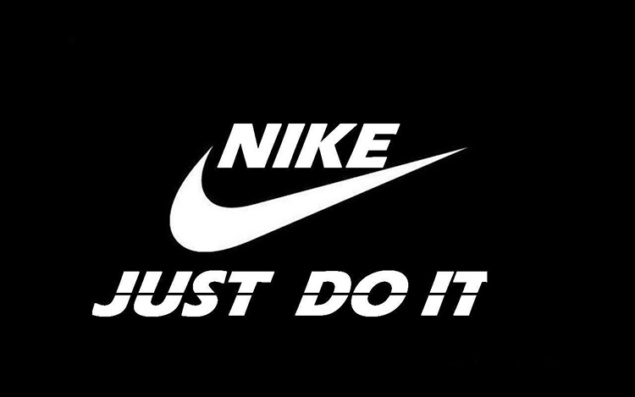Whether you’re a Fortune 500 company or just starting out on your very first small business venture, every company in the world needs an effective marketing strategy to build brand awareness and drive new customers to its products and services. However, if you’ve never been involved in successful marketing strategies, creating one can be easier said than done.
The most effective marketing strategies consider every aspect of the marketing flow, from a thorough understanding of your audience personas to a clear-cut marketing budget and so much more; there’s a lot to cover in a company marketing strategy.
In this guide, we’re going to look at some of the best marketing strategies of all time and explain how you can utilize different types of marketing strategies to maximize your returns in no time.
What is a marketing strategy?
Before we tell you how to compose an effective marketing strategy, you need to understand what a marketing strategy is and how it can help you improve your advertising.
In simple terms, business marketing strategies are a tool marketers use to outline their various campaigns and marketing models. It’s the how of how you’ll get customers interested in your products and services.
To create an effective marketing strategy, you need to do four things:
- Understand who buys your products or services (who are your customers?)
- Understand how to motivate these people to buy/continue to buy your products or services
- Understand who your competitors are and what they’re doing to achieve the same objectives
- Understand how to measure the success of your marketing campaigns and efforts.
Like a marketing plan, your marketing strategy should cover the five “Ps” of marketing:
- Product – What you’re trying to sell
- Price – Profit margins, marketing budget, etc.
- Place – What channels or platforms will you use? (For example, will you be advertising on social media, utilizing email marketing, or going offline?) Consider where your customers already spend their time for the optimal marketing locations.
- Promotion – What are you trying to achieve? (Are you hoping to build your social media presence, increase brand perception, promote a new product, or something else?)
- People – Who is your target audience? What drives them?
Once you’ve answered these questions, you’ll be in a fantastic position to start building your company’s marketing strategy.

Marketing strategies vs. marketing plans vs. marketing tactics
Although “marketing strategies” might seem relatively straightforward, there can often be some confusion when establishing whether you’re creating a marketing strategy, marketing plan, or marketing tactic. While all three of these marketing initiatives work together, they cover slightly different aspects and should not be used interchangeably.
Marketing plan
A marketing plan is an overview of all your marketing initiatives. This will include all the campaigns you intend to run over a set period of time, your goals and ambitions for the projects as a whole, and any research you’ve compiled to support these aims.
Marketing strategies
Marketing strategies at first glance appear very similar to the overarching marketing plan. However, the strategies will take a closer look at just a few select parts of the marketing plan.
For example, if your marketing plan is to promote a new product or service, you might have a strategy dedicated to how you’re going to use email marketing to support these broader goals. Every marketing plan will most likely produce several marketing strategies as part of the broader plan.
Marketing tactics
While the marketing plan and strategies are committed to explaining what you’re going to do, marketing tactics go deeper again and establish how you’re going to do it.
Using the above example, the marketing plan is to build awareness for a new product. The marketing strategy is how you’ll utilize email marketing as part of this. The marketing tactics will detail the specific actions you’ll take as part of the marketing campaign.

Types of marketing strategies
Now we understand some of the different marketing terms, it’s time to zone in on marketing strategies and how these work as part of your business plan.
There are numerous different types of marketing strategies you can use depending on your business needs. While we’re not going to cover every marketing strategy type today, these are some of the main ones that you’re likely to come across:
1. Social media marketing strategy
Today, social media marketing is a huge part of any business’s marketing plan as it’s a hugely compelling way to drive traffic, build brand awareness, and take advantage of the social selling revelation that’s taking over online marketing.
According to recent data, around 54% of social media users use social platforms to research brands and products, and 89% of consumers who follow a particular brand will purchase from that brand.
With these figures, if you’re not utilizing an effective social media marketing strategy, you’re missing out on untold rewards.
2. Email marketing strategy
Anyone who’s ever told you “email is dead” is dead wrong. Capturing your customers’ emails and browsers should be an essential part of your marketing strategy and is an excellent way to continue a conversation with people who have expressed interest in your brand.
There are loads of email marketing tools available to help you in this area. However, you still need an effective email marketing strategy to produce consistent, compelling emails that convert readers into buyers.
3. Inbound marketing strategy
An inbound marketing strategy is all about pulling customers in and driving traffic to your website or products. Rather than using “disruptive” marketing techniques (like TV advertising), inbound marketing is about lead generation using people who have shown interest in your products, services, or brand as a whole.
Email marketing can be a good example of an inbound marketing strategy. If someone has subscribed to your mailing list, chances are they’re at least somewhat interested in what you have to say. This enables you to take a softer approach to your marketing, as these leads are already more likely to become sales.
Another inbound marketing strategy could be blog posts. People will only see blog posts relevant to their search terms and interests, meaning they’ve expressed a need that at least somewhat relates to what you’re selling.
4. Content marketing strategy
A content marketing strategy is likely to overlap with an inbound marketing strategy, but it is more specific. With content marketing strategies, you focus on content creation that will draw people in and build interest.
This is likely to cover blog posts and white papers and can even overlap with your social media marketing.
Effectively, any part of your marketing campaigns that require content will require an effective content marketing strategy.
5. Editorial strategy
Taking an editorial approach is a particularly vital marketing strategy for advertising companies as it highlights the content formats, workflows, and channels you’ll be utilizing to hit your marketing goals.
It’s similar to the sort of marketing strategies you would expect to see in a news or media organization and can be essential for brand publishers or advertisers to keep their marketing efforts and ideas in focus.
6. Marketing communications strategy
Your marketing communications strategy should be primarily focused on your brand’s message and value proposition. It’s all about how you’re going to say what you need to say.
For example, is your tone of voice serious or humorous? Are you marketing yourself as an expert in your industry? What is the message you want to get across?
7. Digital marketing strategy
Digital marketing probably doesn’t need much introduction… This marketing strategy will encompass all your online marketing, SEO, social media lead generation, performance marketing, and more…. Effectively, if it’s online, it should be covered by your digital marketing strategy.
8. Internal marketing strategy
Although internal marketing will be less vital for SMBs, it can be a vital part of the marketing efforts for large companies. A good example of an internal marketing strategy would be an internal email that lets employees know they’re eligible to become shareholders or asks existing shareholders to support a new initiative.
Internal marketing can also cover more mundane issues, such as keeping staff up to date on any changes to the company, branding, or internal procedures.
9. Public relations strategy
If you’re in business, you’ll probably know how complicated PR strategies can be. Not only does getting PR right ensure you keep your customers happy, but it’s also vital for protecting your brand image in the eyes of your stakeholders, the media, and even governmental bodies or other influential institutions.
Any large business should have a dedicated PR team in charge of the brand’s public image. In addition to protecting it, good PR can also offer invaluable word-of-mouth advertising.
10. SEO strategy
SEO should form part of all the different marketing strategies. Still, you may find it beneficial to have some of your marketing efforts explicitly dedicated to SEO, as this is likely to be your primary source of lead generation.
SEO (or Search Engine Optimization) is pretty much what it says on the tin: the art of using keywords and phrases to boost your visibility when users search for relevant terms on the internet. Getting SEO right is arguably the best way to drive traffic to your website and should be front of mind in all your digital marketing and content marketing strategies.
Naturally, SEO goes beyond just keyword optimization and considers a plethora of other aspects to help you rise on those search engine results pages (SERPs). So, it’s a good idea to have at least one marketing team member dedicated to the latest SEO trends so you can rank #1 on Google.
How to create the most effective marketing strategies
When it comes to strategic marketing strategies, there isn’t always a one-size-fits-all solution. Strategies can take many different forms, from word documents to flowcharts to slides… But although they can look different on the outside, the most effective marketing strategies will always have a few things in common.

If nothing else, your marketing strategy should cover the following questions:
Who are you trying to reach?
For this section, you need to really get into the mind of your target audience. This includes building detailed buyer personas and user personas, with information including their demographics, age, location, employment status, interests, passions, pain points, and anything else you can think of. The more detail you can include in your target market research, the better you will understand and communicate with your audience.
Where will you reach your potential customers?
As part of your research into your target audience, you should also spend some time considering the places (online and offline) where they spend their time. For many businesses today, most of your marketing strategies will probably be focused on social media. Still, even once you’ve narrowed this down, it can also be valuable to create marketing strategies for the various social media platforms and any other marketing channels you would like to use.
What action do you want people to take?
The answer to this question will fuel your Call-to-Action phrases and is essentially nailing down the goals of your entire marketing campaign. Do you want to drive more website traffic? Increase sales? Raise awareness for a new product? Get more followers on social media? Boost your search results rankings? Whatever your goals are, having them clearly laid out as part of your digital marketing strategy is essential.
How will you inspire potential customers to take action?
The next question leads off this, and it’s about how you’re going to convince or inspire consumers to take the desired action. This could incorporate discount codes, summer sales, referral programs, or you could even let your brand, product, or service speak for itself if you’re just hoping to build awareness.
How will you measure success?
If you have no KPIs or objective method for measuring the success of your marketing campaign, you really have no way of monitoring whether or not your campaigns are working! Having clear, measurable goals and precise targets you can see whether you’re hitting are essential for an effective marketing strategy. For eg, if your target is to get more followers on Instagram for your brand… It’s easy to see when you’re on track. However, you’ll want to dive deeper than this, with goals for conversions, weekly and monthly targets, etc.
Top 11 great marketing strategy examples and 1 you shouldn’t follow
Now you have an idea of what a marketing strategy is and how to write some of the best marketing strategies, we wanted to give you some great marketing strategies examples so you can see how these work in the real world.
These examples of marketing strategies of a business will provide you with plenty of inspiration for your own campaigns and help you ace the advertising industry. Plus, we’ve included a bonus example of when a marketing strategy didn’t quite go to plan… Take a look!
1. Spotify: offering an alternative user experience

Spotify is the go-to music streaming service for most people around the world, but what is it that makes them stand out?
Spotify’s key marketing efforts focus on how the brand is different from other services, providing users with the chance to discover new music with ease and even lets you filter tracks by mood as well as genre. The artificial intelligence in Spotify’s algorithms provides users with carefully curated, bespoke playlists that actually suit their tastes and manages to turn playing music or listening to a podcast into a whole new experience.
2. Nordstrom: Retargeting campaigns

Nordstrom is well-known for dominating when it comes to marketing, and this campaign was remarkably successful. Employing the latest retargeting technology and tactics, Nordstrom was able to dramatically boost its bottom line and reduce cart abandonment. This campaign primarily utilized abandoned cart emails alongside social media ads that were activated following a website visit from the user.
3. GoPro: User-generated content

GoPro certainly isn’t the first – or the last – company to achieve success with a user-generated-content-led marketing strategy, but that doesn’t make it any less effective or worthy of inclusion in our list! As a brand dedicated to creating on-the-go, fast content, the product lends itself nicely to this marketing tactic, so GoPro can benefit from a “spectacular” Instagram feed without needing a huge budget to take the images itself. And what’s more, each user-generated image that ends up on the feed motivates others to snap pics and share their experiences.
4. Sephora: Loyalty programs

Loyalty programs are a bit of a tale as old as time for maximizing customer retention, but that doesn’t mean all loyalty programs are created equal. Sephora discovered the trick to innovative, inspiring loyalty programs with its tiered approach and generous rewards. These rewards provide plenty of incentive for users to buy and are a fantastic way of increasing word-of-mouth marketing.
5. Rainforest alliance: “Follow the Frog.”

These days, the top online stores all offer information about how they engage in sustainable practices, have cruelty-free manufacturing, and/or how they support charities and initiatives around the world. Rainforest Alliance’s “Follow the Frog” campaign tapped into this priority by offering B2B and B2C organizations the chance to demonstrate their commitment to the environment and sustainability with a green frog seal on their products and website. This became a well-known symbol that’s highly desirable to other brands in all industries.
6. Twitch: Niche-specific marketing

Many brands make the mistake of trying to market their product or service to a target audience that’s simply too broad. But that only leads to a confusing message and few real customers. Instead, follow the lead of the social streaming service, Twitch. This company wasted no time or money advertising to people who won’t be interested in what makes the brand unique… Instead, all its efforts went into establishing precisely who the niche market is and how to attract them.
7. Nike: “Just Do It” – promoting values

We are all familiar with Nike’s “Just Do It” slogan, but have you ever given the marketing plan behind it any thought? Well, Nike used to be a brand dedicated to providing athleticwear to athletes… But they changed their model to appeal to the masses and put values first. The “Just Do It” and “*If you have a body, you’re an athlete” campaigns have been instrumental in Nike’s prolonged success by making everyone feel included and welcomed.
8. Chipotle: Fun contests

Contests are always an effective way to build brand awareness or promote a new product. Chipotle’s 2020 social media contest came at a perfect time and gave the audience a fun and unique way of interacting with the brand. The contest was called “Chipotle Royalty” and involved users posting a TikTok video explaining why their Chipotle order was the best. The prizes? A chance to win $10,000 and have their order become a permanent menu fixture. Definitely worth a video!
9. Red Bull: Putting identify before products

Similar to Nike’s values before products, Red Bull prioritizes experiences and identity of risk-taking front-and-center when it comes to marketing. With Red Bull sponsorships covering everything from Red Bull Stratos (seriously, take a look, it’s really cool) to rallycross racing to Formula One, and so much more, Red Bull had made its identity and brand persona clear… And ensures we won’t forget it any time soon!
10. Starbucks: Making coffee into an experience and a lifestyle

Selling coffee certainly doesn’t sound like a unique endeavor, but Starbucks’ marketing team worked hard to create an experience that wasn’t just about the coffee. With an incredibly famous logo that can be spotted worldwide, Starbucks created a feeling of comfort, inclusion, and home that cannot be rivelled. Coschedule has an interesting, deep-dive article looking at Starbucks‘ marketing strategy in more detail.
11. AllBirds: Humorous, transparent, sustainable

Allbirds’ goal was to create “the world’s most comfortable shoe.” And while they did seem to manage this, it’s not why we’re highlighting their marketing strategy. This strategy really stands out because of the consistent tone of voice and values visible in every piece of marketing, every web page, and every interaction with the brand. The quirky and humorous voice is highly memorable and matches the values of transparency, sustainability, and comfort.
12. Segway: Failed to identify pain points

Now we’ve considered some of the best marketing strategies of all time, we also wanted to look at one brand that didn’t do quite so well. When Segway was first introduced, the idea was that it would replace walking as the primary A-to-B method and could go up to 12.5mph. The primary reason Segway failed is because people didn’t want to stop walking, running, or cycling (among others). So, the pain point the device was built to solve wasn’t really a pain point at all, and Segway offered little benefit to users.
The lesson here? Do your target market research thoroughly, and don’t just build a product because you think it looks cool.
Top tips for creating successful marketing strategies

No matter how big or small your ad campaigns are, it’s essential to always support them with marketing strategies that summarize how you will convert browsers into consumers. To give you a head start at employing the best and most effective marketing techniques, ensure every strategy you create does the following:
Set specific goals
SMART (Specific, Measurable, Achievable, Relevant, Time-based) goals are essential for an excellent marketing strategy. These will not only give you something to aim for, but they’ll also help you monitor your progress and hold you accountable.
Identify your target audience.
Correctly identifying your target audience, their passions, and their pain points is vital. As we learned from Segway, not having a thorough understanding of your audience and what they need/want is only ever going to be a recipe for disaster.
Identify your competition
There’s a lot to be learned from the competition. On the one hand, you can check on other businesses in your industry to see what they’re doing well and what their audience responds to. On the other hand, identifying your competition’s weaker points can be a brilliant springboard to help you find your unique selling proposition and help you stand out.
Choose the most effective platform
There’s no point in shouting about your products in a location your customers never visit. As part of your market research, you should also investigate where your customers spend their time online and offline. Then, build a marketing strategy using the platforms and channels your customers are already using.
Marketing strategies make it more likely that you’ll reach your goals
You don’t need to be a Fortune 500 company to invest in an effective marketing strategy and reap the benefits. Even small businesses need marketing to build brand awareness and get people interested. After all, even with the best products in the world, nobody will buy them if they don’t know who you are!
As the famous quote goes, “failing to prepare is preparing to fail.” And the research backs this up, with 313% of marketers being more likely to report success when they have a documented marketing strategy than those without.
So, don’t waste your precious time and money investing in poorly thought-out marketing campaigns. Instead, take the time to build a detailed plan and strategy with marketing tactics for success, and you’ll be sure to maximize your ROI in no time.

FAQ
How do you create a marketing strategy?
Building a marketing strategy isn’t that different from writing a marketing plan… It’s just more detailed and niche than the overarching plan and focuses on one/two platforms at a time.
How do you write a marketing strategy example?
It’s worth (if you can) taking a look at some other successful marketing strategy examples from similar companies in your industry before writing your own if you’re not sure where to start. This will give you an idea of what has/hasn’t worked in the past and will enable you to cultivate a better strategy than the one before. Even if you can’t view the marketing strategy document, plenty of research is always necessary for any advertising campaign; the more information you have before you start, the better your marketing strategy will be.
What are the five marketing strategies?
The five “Ps” of marketing are Product, Price, Promotion, Place, and People. These “Ps” are essential to quality marketing efforts and should all be covered in your marketing strategy example.




